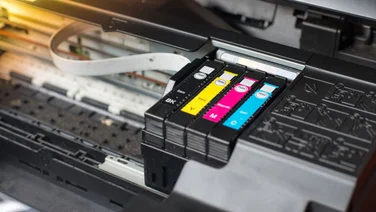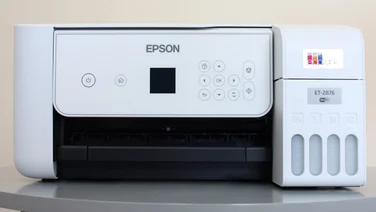To help us provide you with free impartial advice, we may earn a commission if you buy through links on our site. Learn more





So-called hybrid cameras are the talk of the town at the moment as they’re designed to give users the best of both worlds. They promise the image quality and flexibility of a DSLR with similar controls and handling, but in a much more compact body.
Panasonic was the first company to release such a camera, the Lumix DMC-G1, after working with Olympus to develop the Micro Four Thirds lens mount. Thus far, they’ve been quite expensive with the Olympus E-PL1 and Samsung NX10 the most keenly priced at around £500 for a standard kit. The Lumix DMC-G10 is £50 cheaper, but still competes head on with these and a raft of very good low-cost DSLRs.
Like its predecessors, the G10 resembles a DSLR at first glance, but it’s quite a bit smaller – and thinner – because there’s no mirror mechanism between lens and sensor. The body is well sculpted and is covered in a subtly rubberised matte coating which looks and feels nice.

To add to that pleasure, the hand grip fits comfortably with almost all controls within reach for one-handed operation. The buttons feel positive and precise, but there are a couple of changes we’d make to the layout. The LVF/LCD switch, which is on the left hand side above the 3in 460,000-dot LCD and switches between the rear screen and live electronic viewfinder, could be better-positioned. However, we weren’t that impressed with the electronic viewfinder’s meagre 202,000-dot resolution and found ourselves relying on the LCD screen in all but the brightest shooting conditions, making button placement less of an issue. The playback button is also in a slightly strange position, but it’s easy enough to get used to.
The G10 has a 12.1-megapixel Live MOS Four Thirds sensor and is combined with an upgraded Venus Engine HD II processor. The combination gives an expanded sensitivity of ISO 100 to 6400 and support for 720p HD video recording, which was missing from the original Lumix G1.

It records HD video at 1,280×720 at 30fps in the Motion JPEG format, which isn’t particularly efficient, but the quality is good and the available My Colour digital effect filters are useful if you want to be more creative. Image quality in still photographs was also pleasing, with generally good exposure control, vibrant colours and good centre sharpness.
It’s also a very quick camera, almost as quick as an SLR, despite using a contrast-detect auto-focus system. The weaknesses of this type of AF system do become apparent in poorly-lit environments, where it starts to search a bit, but it behaved well in all other scenarios.
The included 14-42mm lens has a few issues too, and it exhibits significant barrel distortion at the wide end and pin cushion distortion at the telephoto end of its zoom range. Corner sharpness is also a problem at wider angles at large apertures (between f/3.5 and f/5.6), but is much better at the longer end of the zoom. With smaller apertures, images are sharp from corner to corner.
Noise is well controlled in JPEGs and while RAW files do exhibit more noise, there’s also more detail and Adobe Lightroom 3 will quickly sort the noise out. Up to ISO 400 is effectively noise free, while ISO 800 and 1600 are definitely useable. Higher sensitivities should be reserved only for extreme situations as image quality starts to degrade – tonal or colour gradations are the most obvious areas to suffer.

What concerns us more is the sometimes-suspect metering system and some bizarre oversights in the auto-ISO implementation. Without image stabilisation, it’s widely accepted that the minimum acceptable shutter speed to get consistently shake-free images is the inverse of the equivalent 35mm focal length but the Lumix G10 quite often disregards this unwritten rule. Setting the camera to either the intelligent multiple or centre-weighted metering modes, the ISO would not venture above either ISO 400 despite the very slow shutter speed required for a correct exposure.
Even with image stabilisation turned off, we experienced scenarios in both the aperture priority and iA (intelligent Auto) modes, where the suggested shutter speed was below 1/10s at 42mm (84mm equivalent). To obtain an acceptable shutter speed, we had to manually select a higher sensitivity as the camera’s software stopped it from going higher – a decision that’s likely to frustrate users when they realise that their camera isn’t quite as automatic as it might seem.

With image stabilisation enabled via the camera’s menu, the problem persisted, but we were able to obtain sharp images at much slower shutter speeds – we found that the IS helped us take sharp pictures at shutter speeds between two and three stops longer than without it. Image stabilisation is lens based and there are three image stabilisation modes on the G10’s kit lens; Mode 1 is on all the time, Mode 2 only activates IS when the shutter is pressed and there’s also an Auto mode.
It’s obvious that the G10 has been designed to hit a certain price and there are areas, such as the electronic viewfinder, that maybe should have been left out completely in order to meet the desired price. The G10 feels like it could be a much better camera, but to be fair that’s exactly what Panasonic wants it to be, but if video isn’t important to you, the Lumix DMC-G1 is a better buy at just £400.






